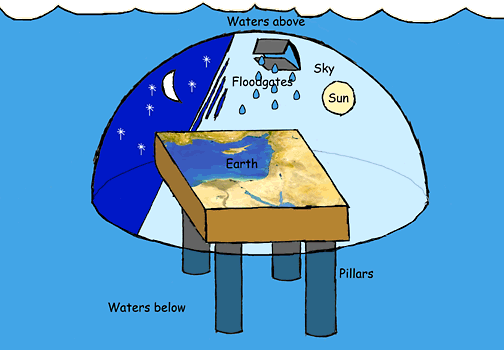

|

The earth and universe have been studied scientifically only since the 16th century. Before that, the only thing people knew about the earth and the universe was what they could see with their eyes. They knew nothing of the true shape of the earth, the solar system, the water cycle, orbital mechanics or the vastness of the universe. The Bible was written long before the scientific age began, and the ancient view of the earth and heavens can be seen throughout the Bible.
The earth was seen as being flat with four corners (Ezekiel 7:2, Isaiah 41:9, Revelation 7:1). The earth was supported on pillars (1 Samuel 2:8, Psalms 75:3). A dome, expanse or firmament, called "heaven" or "sky", separated the waters below the earth from the waters above (Genesis 1:6-8, Exodus 20:4, Deuteronomy 5:8). The sun, moon and stars moved about in the firmament (Genesis 1:14-18). The windows or floodgates of the sky could be opened to admit rain (Genesis 7:11, 8:2, Isaiah 24:18, Malachi 3:10). Sheol, the abode of the dead, was a pit under the earth (Numbers 16:31-34, Psalms 16:10, Isaiah 14:9).
Thanks to science, we now know that the universe is quite different from the way it was conceived in ancient times. But, in reality, we still understand only a little about God's wondrous creation. As science progresses, our current knowledge of the universe will probably seem as backward to people of the future as the ancient view seems to us.